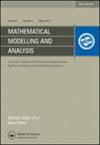基于r nyi散度度量的纹理图像分割主动轮廓模型
IF 1.4
3区 数学
Q1 MATHEMATICS
引用次数: 0
摘要
提出了一种有效的主动无监督纹理分割方法。构造了一种基于高斯曲率和平均曲率的纹理特征提取描述符。然后利用R´enyi散度度量和我们的描述符对函数进行优化,从而设计出一种用于纹理分割的活动轮廓模型。为了得到全局解和高效、快速的算法,重新定义了优化问题。与我们的活动轮廓模型的水平集表示相比,与最后一个优化问题相关的算法避免了局部最小值和运行时间消耗。为了说明该技术的性能,给出了一些结果,表明了该方法的有效性和鲁棒性。本文章由计算机程序翻译,如有差异,请以英文原文为准。
An Active Contour Model for texture Image Segmentation using RéNyi Divergence Measure
This paper proposes an efficient method for active unsupervised texture segmentation. A new descriptor for texture features extractions based on Gaussian and mean curvature is constructed. Then the optimization of a functional who uses the R´enyi divergence measure and our descriptor is proposed in order to design an active contour model for texture segmentation. To get a global solution and efficient, fast algorithm, the optimization problem is redefined. The algorithm associated with this last optimization problem avoids local minimums and the run-time consuming compared to the level-set representation of our active contour model. In order to illustrate the performance of the technique, some results are presented showing the effectiveness and robustness of our approach.
求助全文
通过发布文献求助,成功后即可免费获取论文全文。
去求助
来源期刊
CiteScore
2.80
自引率
5.60%
发文量
28
审稿时长
4.5 months
期刊介绍:
Mathematical Modelling and Analysis publishes original research on all areas of mathematical modelling and analysis.

 求助内容:
求助内容: 应助结果提醒方式:
应助结果提醒方式:


